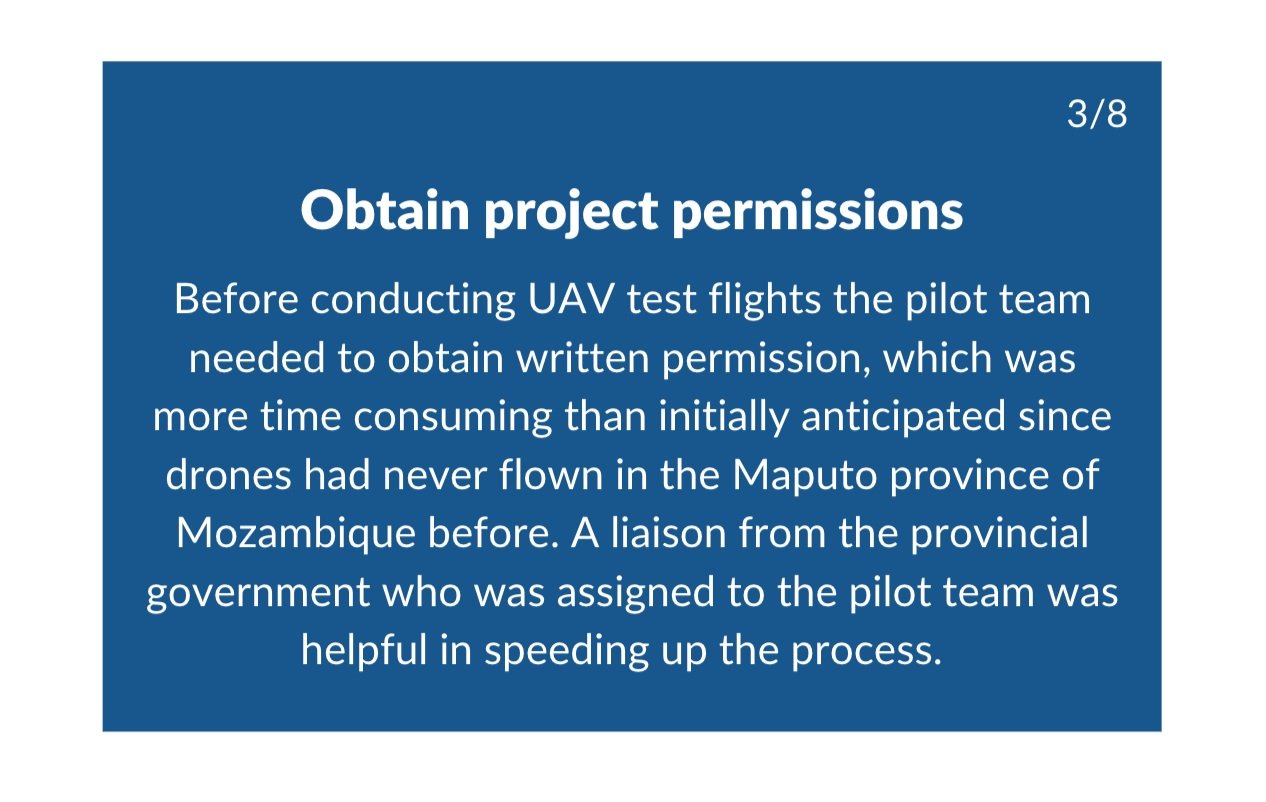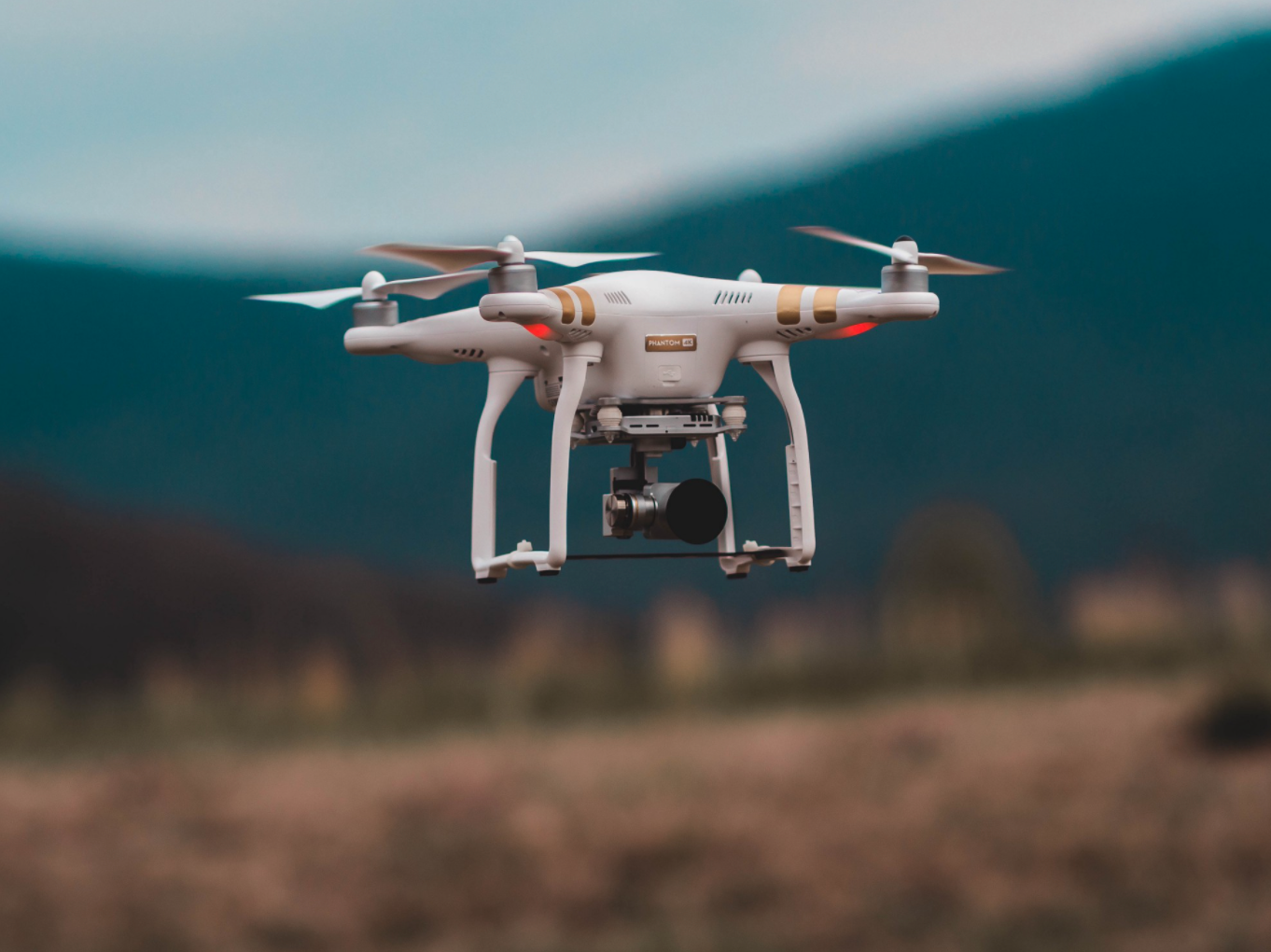UAVs for lab sample transport in Mozambique
Can an enabling environment be built in Mozambique for the testing of unmanned aerial vehicles (UAVs or drones) in the tuberculosis sample transportation network?
LOCATION | Mozambique
SECTOR | Health
TECH | UAVs
TIMELINE | February 2018 - Present
PARTNERS | Village Reach
The Challenge
While Mozambique has the third highest rate of tuberculosis (TB) cases worldwide, it is also one of the countries most affected by “missing cases”, or cases of TB that go undiagnosed or unreported to the carrier. Mozambique’s TB detection rate is 57%, which is in part due to the inefficient transport network for TB samples. During the rainy season, some health facilities are unreachable through conventional transport. When samples do finally reach the lab, the sample quality is often too poor to process. Timely diagnosis and treatment is crucial to tackling the TB epidemic.
The Idea
Unmanned aerial vehicles (UAVs), or drones, can be used to leapfrog traditional methods of tuberculosis sample delivery and become a key part of Mozambique’s laboratory sample transport network. This pilot will test the feasibility of transporting samples from a health centre to a lab by drone, both safely and reliably. It will also test stakeholder engagement and community perception of UAVs, as this had not been tested in Mozambique.
The Scaling Journey
What we learned
It was vital to our success that we engaged key stakeholders, particularly government officials, early on in the pilot. While consultation with government actors at all levels took time, it was necessary for ensuring their leadership and engagement in the project. Being deliberate about who, when and how to engage, and being empathetic to the needs and concerns of different stakeholders was crucial to progress in this pilot.
Scaling UAVs in the public health sector requires Civil Aviation, the Ministry of Health and local governments to be on board with the project. While some laws are restrictive, exceptions can be obtained if the drone company can make a compelling safety case.
The Ministry of Health and local governments often have more pressing priorities, such as infrastructure and equipment, that take priority over high-tech solutions. To gain sustained funding and government involvement, the benefits of UAV technology in reaching hard-to-access areas and providing good value for money must be clearly communicated.
Feedback loops in the pilot took a long time due to the multi-stakeholder approach we took in a topic (UAV tech) that was new territory for Mozambican authorities. It was challenging to test hypotheses quickly, and it is important to factor this time constraint in the design of the pilot project.
All photos on this page were taken by the pilot’s implementing partner, VillageReach. Read more
Explore the step-by-step journey of the pilot – Pilot Story
Read about the regulatory barriers the pilot faced — “Same Side of the Table”
Learn more about the use of drones in humanitarian aid — “Using drones to deliver critical humanitarian aid”













